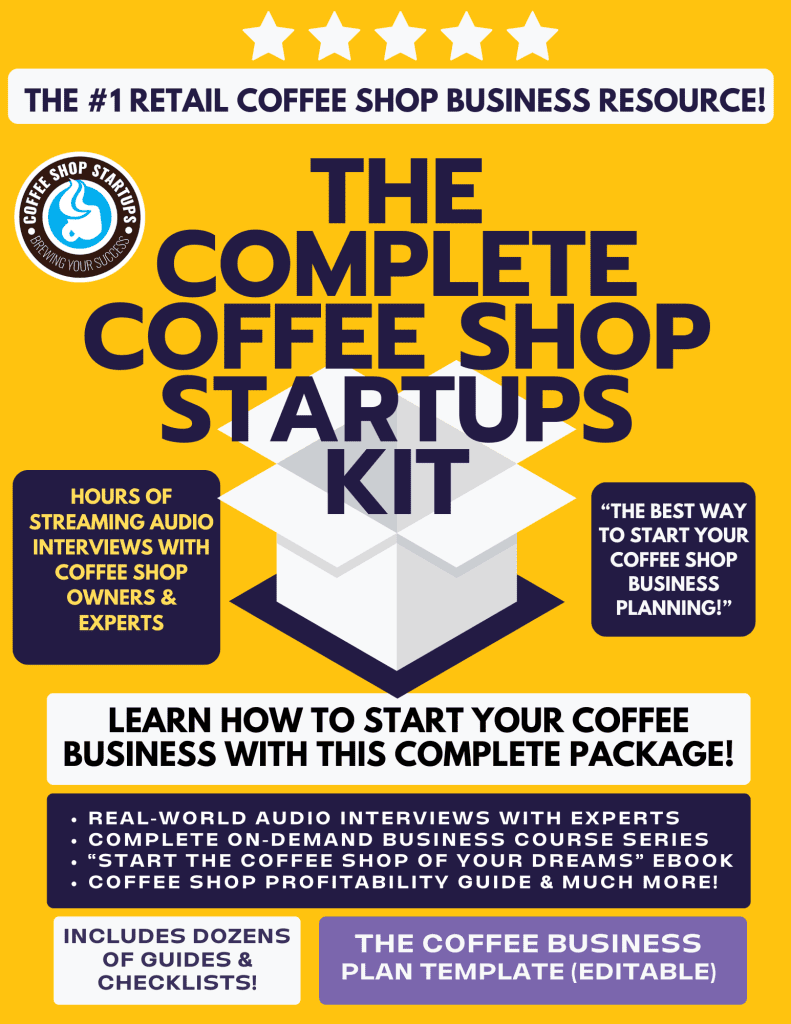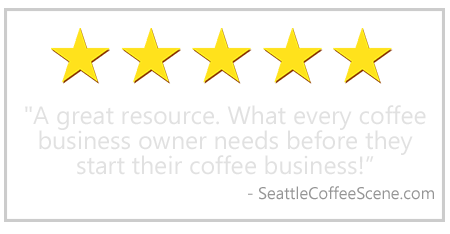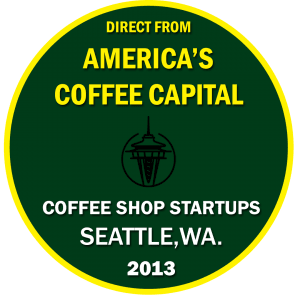How To Price Your Coffee Beverages
How to Price Your Coffee Shop Items

Coffee Shop Management
How To Price Your Coffee Beverages
And Other Products
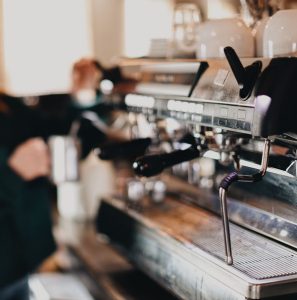 How much will you charge for your coffee?
How much will you charge for your coffee?
It may be a more challenging question than it seems at first – yet many coffee business owners don't give pricing the appropriate attention it deserves.
Ultimately, the success of your pricing strategy will determine your coffee business's viability. We've addressed the question previously in our post, How to Determine the Cost of Selling 100 Coffees. However, in this post, we want to address how you may consider pricing a single cup of coffee.
Coffee Shop Owner's Choice
How Much Should You Charge For Your Coffee?
Should you charge $4.00 or $5.00 for an Americano? How much for a Vanilla Latte or a cappuccino?
At first, charging $3.50 or $4.50 for an Americano might work, but how do you genuinely know? Will this price be acceptable for your target market? Will it cover all the expenses you incur to brew an Americano?
There are several different pricing strategies that you can take when building out your menu pricing.
However, determining your actual pricing route will require a few considerations. We'll look at those in great detail below.
Further Reading: How Much Does it Cost to Start a Coffee Shop?
![]()
What Determines the Cost of Your Coffee?
The cost of delivering your items to your customers is often called the “Cost of Goods Sold.” “COGS” is the common acronym.
These COGS constitute all the costs required to make your cup of coffee.
In today's article, as an illustration, we'll discuss the cost of an Americano and a regular latte, which is a double espresso shot with steamed milk.
To bring your customer one Americano or one regular latte, you'll have several expenses that you need to have already paid for – which are a part of your COGS.
Let's go through these now.
Your Fixed Costs
Your coffee shop's fixed costs are those expenses that always stay the same. These may include your rental payments, loan payments, insurance premiums, and the manager's monthly salary.
Your Variable Costs
Your coffee shop's variable costs fluctuate on the activity of the business. For example, if you serve more coffee, you'll naturally have more expenses with coffee beans, milk, sugar, utilities, and labor costs.
I like to add all other related costs to your variable costs (sometimes called consumable costs). These may include the delivery of your coffee, milk, or other miscellaneous expenses.
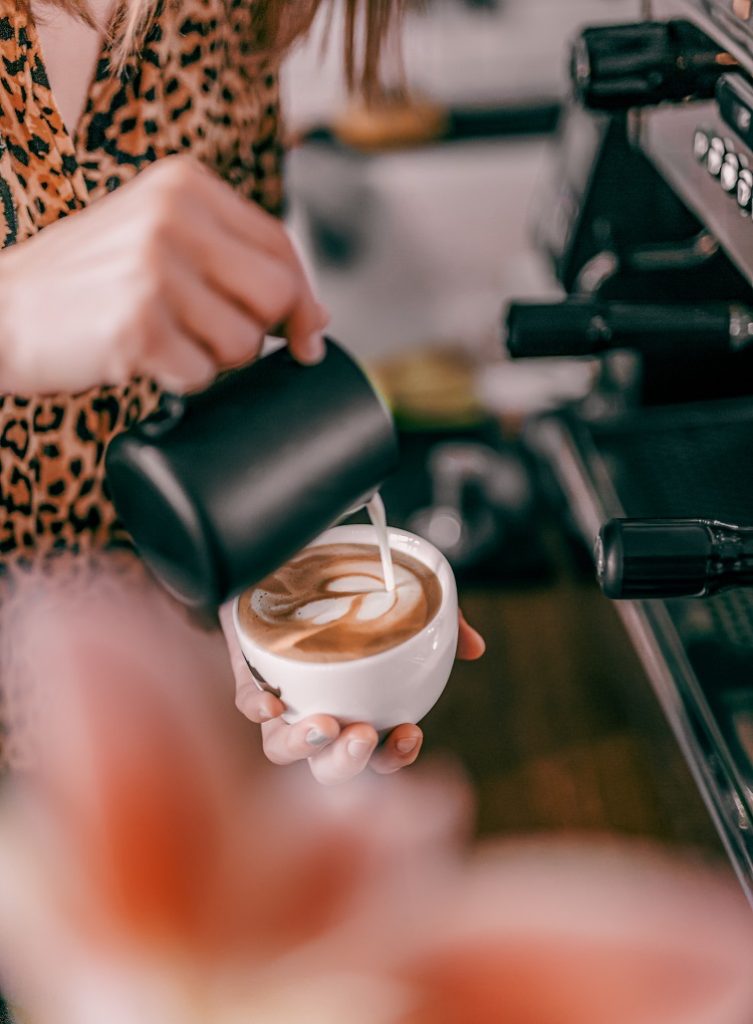 Profit Margin Needed
Profit Margin Needed
So now that we've determined your fixed and variable costs, you can't stop there. You will want to include the profit margin you would like to have per item above your fixed and variable costs. A portion of this profit could or would go back into the business and into paying you, the owner.
Competition
Another essential element is your competition's pricing. Once you factor in your fixed and variable costs and the profit needed, you'll want to see where your competition is.
Are they charging less or more?
Get specific. Maybe they are charging less but also offering less quality beans, milk, or mediocre service.
If they are charging more, ask why. Are they providing better service, products, and quality items?
They may provide less expensive pastries because they are baking them in-house, whereas you buy yours from a vendor. Overall, where would your pricing differ from theirs?
Value
Look at the value you are providing your customers. Are you offering more than just a cup of coffee? Then, look at ways to highlight the perceived value that you are offering.
These elements and possibly other considerations should be assessed in your coffee shop pricing strategy.
Trending Articles on Coffee Shop Startups:
| Coffee Shop Ideas & Concepts | Coffee Shop Budget and Planning |
|---|---|
| 50 Coffee Shop Ideas & Concepts | 7 Ways to Open a Coffee Shop with No Money |
| Low-Cost Coffee Shop Ideas | Open a Coffee Shop Bookstore |
| How to Open a Drive-Thru Coffee Stand | How Much do Coffee Shop Owners Make? |
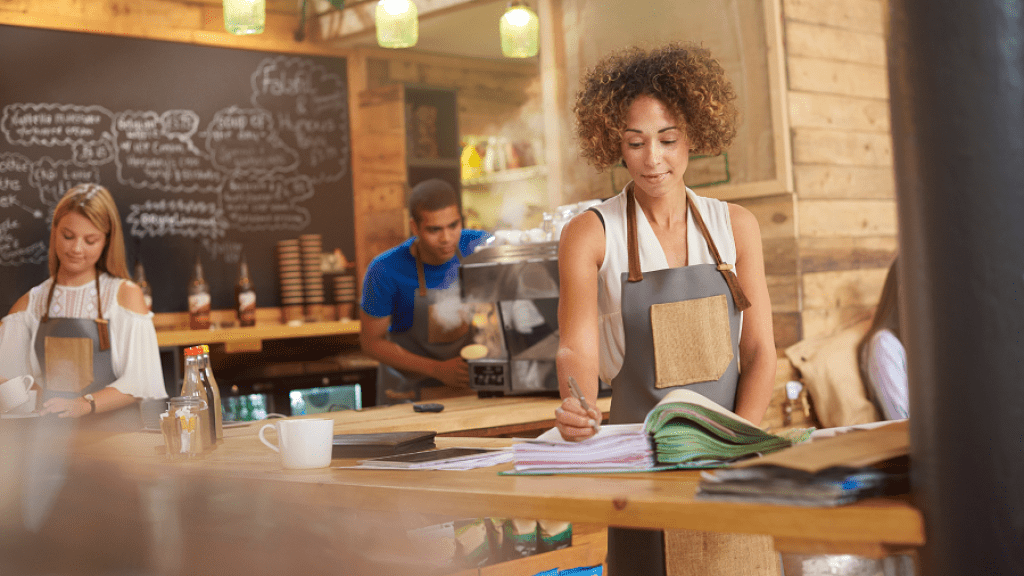
Coffee Shop Management
Determining the Cost of Your Coffee
So, we've briefly covered the elements you'll want to consider as you price your coffee. Now let's get a lot more specific using the example of an Americano and a latte.
Let's review them below.
The Cost of Coffee
Americano is a double shot of espresso and water (12-ounce beverage).
- Let's assume you pay $12 for a pound of coffee (.45 kilos)
- A pound of coffee is about 453 grams.
- On average, a double shot of espresso requires 18 to 22 grams of ground coffee.
- At 20 grams per double shot of espresso, you can make 22 Americanos. You can make 25 Americanos if you use 18 grams.
- You will need to account for some waste between shots and dialing in your espresso in the morning.
Using 18 grams, you can make 25 Americanos for $12 of whole-bean coffee.
$12/25 = .48 cents an Americano.
Cost of Cups, Lids & Sleeves
You may have chosen to have ceramic cups and saucers to serve coffee, but I will use paper cups, lids, and sleeves for this illustration.
If you buy in bulk, you can save considerably on these costs.
Let's assume that for your cups, lids, and sleeves, your total cost would be .24 cents per customer.
Cost of Water
While the cost of water may be nominal, we need to recognize that some costs are associated with it. So, let's add a cost placeholder of .05 cents.
Your Cost of Milk
Costs associated with Americano include milk. So, let's calculate the cost of buying a gallon of milk for $4.00. Milk substitutes will probably cost more and need to be included in your pricing.
A gallon of milk is about 128 liquid ounces. So let's divide 128 by 10 ounces for each latte drink. Consider, however, that milk will expand as you steam it and require less per cup. However, for rounding purposes, let's estimate that a gallon will give us enough milk for 12 lattes.
Ten coffees will then require about .40 cents of milk. $4.00/10 beverages = .40 cents.
Let's add up the total wholesale cost of an Americano and Latte:
| Americano: | Latte: |
|
|
|
| Coffee .48
Cups, Lid, Sleeve: .24 Water: .05
Total: .77 cents |
Coffee: .48
Cups, Lid, Sleeve: .24 Water: .05 Milk: .40 Total: 1.17 |
Coffee Shop Labor Costs
Your labor cost per item fluctuates depending on how busy you are. For example, if you sell ten coffees an hour, your labor cost per coffee will be more if you make 15 or 50 coffees per hour for your customers.
For the sake of this illustration, let's say you pay your barista $15 per hour. Your barista makes 30 coffees per hour. That's one coffee every 2 minutes.
We calculate the percentage of your hourly wage expenditure this way:
2 ÷ 60 x 100 = 3.33%
(2 minutes per coffee ÷ 60 minutes in an hour x 100 = percentage per hour)
3.33 x 15 ÷ 100 = .4995
(Percentage of time per hour x how many coffees are made per hour ÷ 100 = cost per hour)
So, that's a lot of calculating in this example, and chances are you may not do this for every item.
If he makes $15 per hour and makes 30 coffees per hour – This would cost about .49 cents per coffee in labor.
This amount might seem like a lot – and it is if that's the only thing your barista did. However, remember that your customers may be ordering pastries, cakes, and sandwiches, which add to your sales revenue. In addition, your barista is also prepping food, serving orders, clearing off tables, maintaining your coffee equipment, ringing up orders, running your coffee shop, and speaking with customers.
It's challenging to quantify everything your baristas do for your business. That's why hiring the best baristas will also be among the critical elements of your coffee shop's success.
What Should You Charge for Coffee?
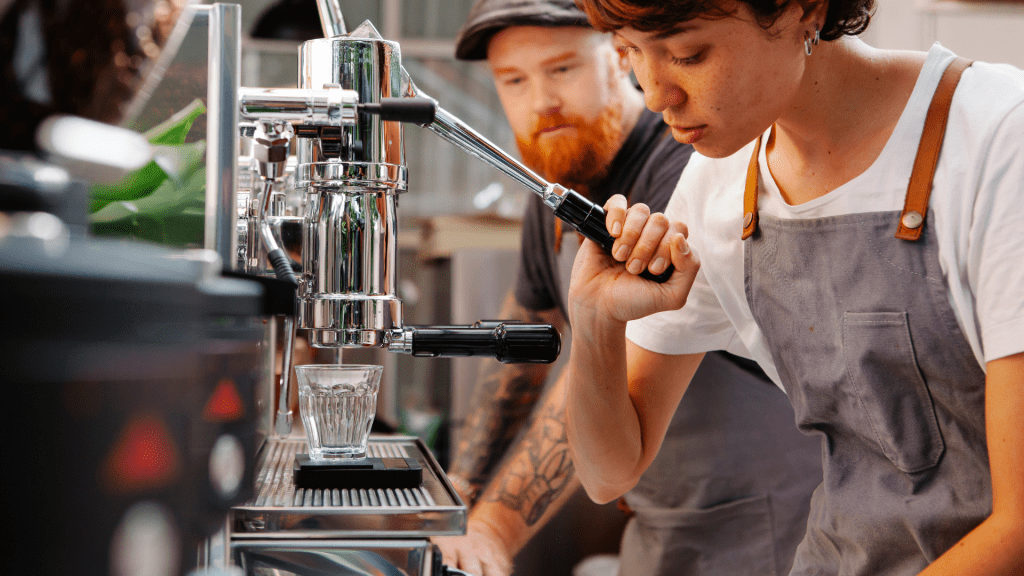
How to Price Your Coffee
Ok, as stated in this illustration, an Americano will cost you .77 cents to make; a latte will cost you $1.12 to serve.
These costs do not include the labor costs we just calculated. However, if you choose to add it, let's add .49 to each cost and work with the following numbers:
- Cost for an Americano: $1.26
- Cost for a regular latte: $1.75
So, now that we know your basic cost let's look at the pricing you should consider setting.
*Please note that you will need to build in your fixed and variable costs and then consider how it will impact your profit margin.
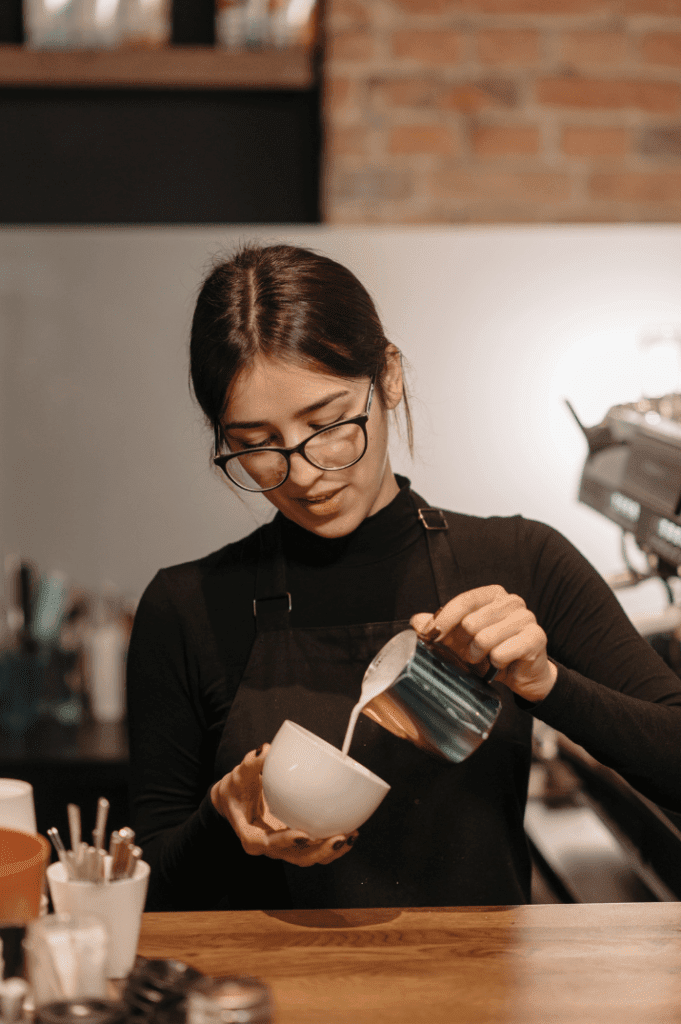 Keystone Pricing:
Keystone Pricing:
This pricing strategy is often a starting point. Keystone pricing essentially means taking the item's wholesale cost and doubling it to arrive at a retail price.
Hover, if you go this route, there are times when you will sell yourself short. The value may actually be more than double the wholesale cost.
Using the above numbers, the retail cost of our Americano would be $2.52, and the latte would be $3.50.
Value-Based Pricing
Value-based pricing is founded on what your customers actually think your coffee is worth.
If you create a greater perceived value, you may charge 3.50 for an Americano and $4.50 for a latte.
Competitive Pricing
Competitive pricing is figuring out what your competition charges and mimicking their prices.
This is not ideal because their costs and volume may differ completely from yours. For example, if they own the building they are working out of, their rent will be lower than yours.
Penetration Pricing
Penetration pricing is a strategy that is used to enter the market. It lowers the costs so much that customers would try your coffee. In my opinion, lowering your coffee prices to break into a market is an effective option. It just makes your finances more vulnerable and trains your customers to believe that you offer cheap coffee.
Premium Pricing
Premium pricing is the strategy that your coffee is offered at premium costs but that you, in turn, build up the perceived value of the coffee. This can be done in several ways that include your décor, ambiance, and branding.
Now there are other pricing strategies you may have heard about, such as skimming pricing, dynamic pricing, and economy pricing, but they don't pertain to coffee or food in general.
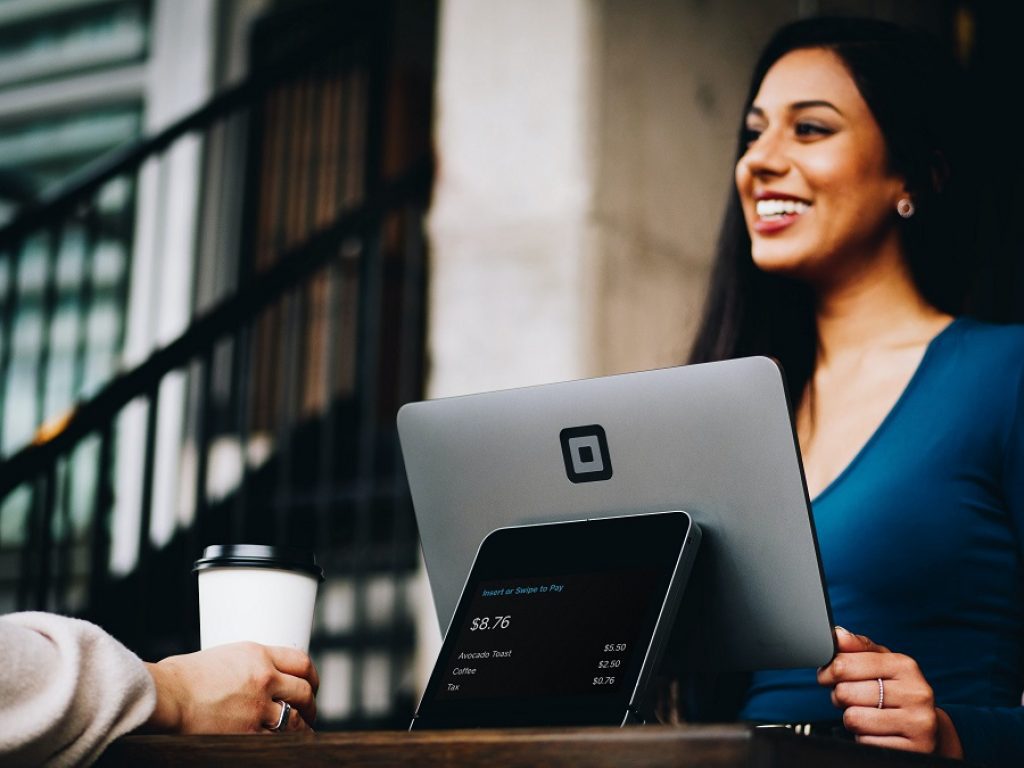
Your Coffee Shop Pricing Strategy
What Pricing Options Will You Have?
There are clearly a variety of options that you have to develop your coffee pricing. To be sure, it's a bit of an art and science.
Find the right balance requires you to:
- Know your customer (target market)
- Determine your costs
- Understand your product's value
- Know your financial goals
- Understand the competitive marketplace
- Communicate your value to your customers
- Always assess and adjust your prices accordingly
Best Coffee Shop Pricing Strategy
You will need a pricing strategy that works for your concept, budget, and profit goals. However, you'll always want to consider the following when it comes to your final price.
Portray Value
Always work to portray the value of your products and services. The value of your coffee and the items you sell
Convenience
In addition to emphasizing your value, you will want to consider the convenience factor. Make it easy for your customer to access your business, buy coffee, sit down, or leave. Convenience is a value that many customers have when it comes to coffee.
Targets the right customers
While many people love coffee, not everyone will be your ideal customer. Know your customers – what they want, what they need, and what they value.
Further Reading: Requirements to Start a Coffee Shop

Related Questions:
Should I price my items to what Starbucks or other large coffee chains do?
Large coffee chains have an economy-of-scale advantage over many independent coffee shops. Their whole-bean coffee, milk, and real estate costs can be much lower than yours. They also have a nearly bottomless pit of money to compete with you on price.
Therefore, while it's important to consider what the neighborhood coffee chains are charging for their coffee, it should not be the only determinant in deciding how much you charge. Your costs and profit margin goals may be much different.
![]()
Are You Ready To Get Started?
Unlock Your Dream Coffee Shop Business with Our Exclusive Coffee Shop Startups Kit!
Ready to transform your passion for coffee into a thriving business? Look no further! Our Coffee Shop Startups Kit is your key to brewing success. Here's why you can't miss this opportunity:
![]() 35-Lecture Coffee Shop Business Course: Our kit provides a comprehensive A-to-Z lecture series that covers what you should know and how to plan your coffee business. No more guesswork – follow our proven roadmap for success.
35-Lecture Coffee Shop Business Course: Our kit provides a comprehensive A-to-Z lecture series that covers what you should know and how to plan your coffee business. No more guesswork – follow our proven roadmap for success.
![]() Comprehensive Coffee Shop Business Guide: Our kit includes a detailed, step-by-step guide that takes you from creating your concept to your grand opening.
Comprehensive Coffee Shop Business Guide: Our kit includes a detailed, step-by-step guide that takes you from creating your concept to your grand opening.
![]() Expert Interviews and Insights: Benefit from insider tips and industry secrets that successful coffee shop owners and experts share during one-on-one interviews. Learn from the best to stay ahead of the competition.
Expert Interviews and Insights: Benefit from insider tips and industry secrets that successful coffee shop owners and experts share during one-on-one interviews. Learn from the best to stay ahead of the competition.
![]() Business Essentials: We provide business plan templates, checklists, and resources to streamline your startup process. From permits to menu planning, we've got you covered.
Business Essentials: We provide business plan templates, checklists, and resources to streamline your startup process. From permits to menu planning, we've got you covered.
![]() Cost-effective Solutions: Save time and money with our expert advice and budgeting tips. Maximize your ROI and minimize headaches.
Cost-effective Solutions: Save time and money with our expert advice and budgeting tips. Maximize your ROI and minimize headaches.
![]() Adaptable to Any Setting: Our kit is designed to suit various locations and customer demographics, whether you're eyeing a trendy urban spot or a cozy corner in a suburban neighborhood.
Adaptable to Any Setting: Our kit is designed to suit various locations and customer demographics, whether you're eyeing a trendy urban spot or a cozy corner in a suburban neighborhood.
Includes Exclusive BONUS Material!
👉 Order Now and Begin Your Journey!
Don't let the complexities of starting a coffee shop overwhelm you. Our Coffee Shop Startups Kit is your ticket to entrepreneurial success. Take the first step towards owning a profitable and fulfilling coffee business today.
Join the thousands of successful coffee entrepreneurs who started with a dream and a great plan. Your journey to coffee shop greatness begins right here!
Comprehensive. Proven. Affordable.
The Complete Coffee Shop Startup Kit
(Instantly Delivered To You)
* The information on this page is for educational purposes only. We do not offer legal advice.


